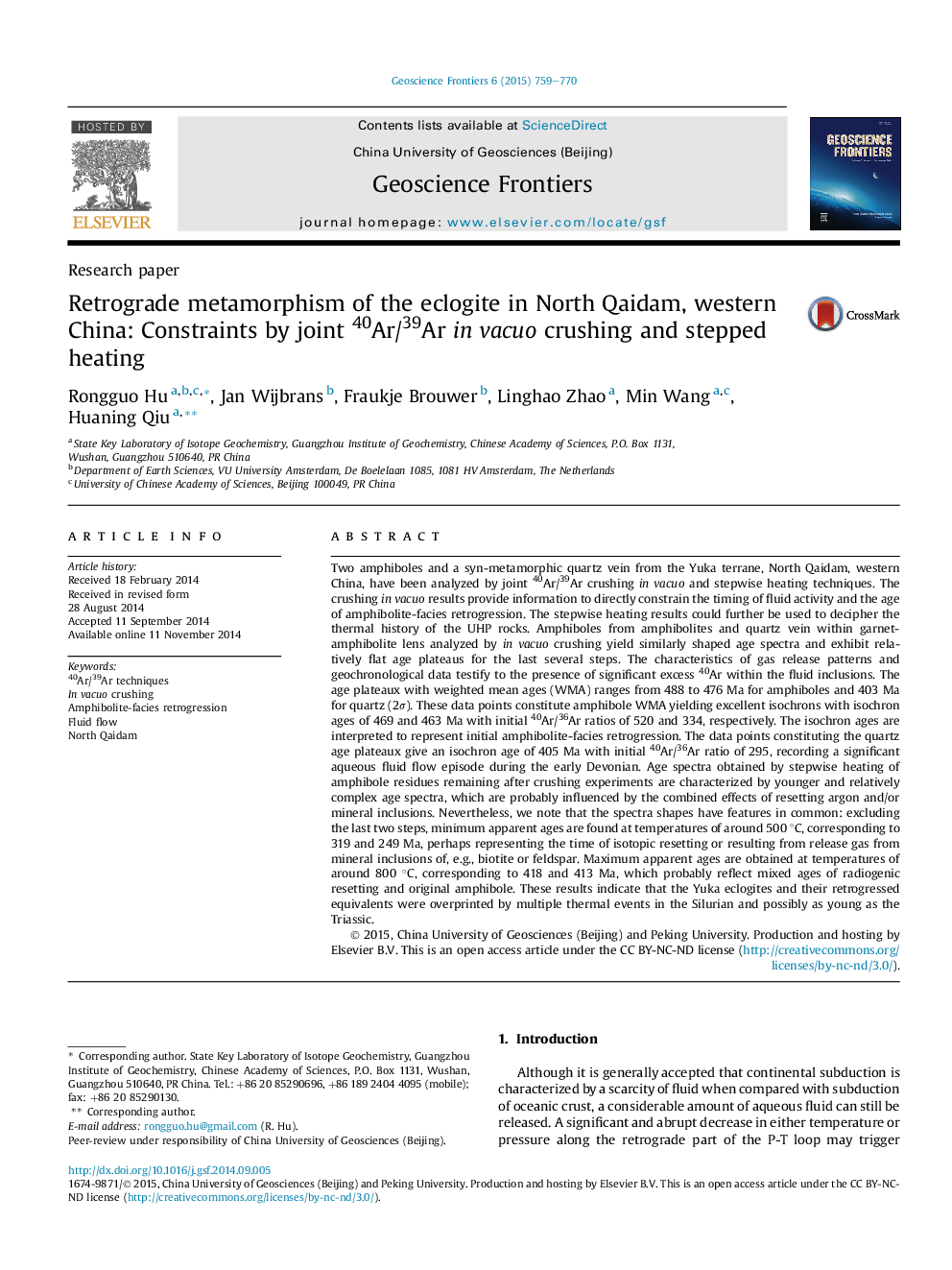| Article ID | Journal | Published Year | Pages | File Type |
|---|---|---|---|---|
| 4681573 | Geoscience Frontiers | 2015 | 12 Pages |
•We applied crushing in vacuo and stepped heating 40Ar/39Ar method on Yuka amphiboles.•Crushing in vacuo provided data for constraining the amphibolite-facies retrogression.•The Yuka eclogites were overprinted by thermal events in the Silurian to the Triassic.•Crushing in vacuo also testified the excess 40Ar held in the fluid inclusions.•This method is very useful for dating excess 40Ar containing metamorphic minerals.
Two amphiboles and a syn-metamorphic quartz vein from the Yuka terrane, North Qaidam, western China, have been analyzed by joint 40Ar/39Ar crushing in vacuo and stepwise heating techniques. The crushing in vacuo results provide information to directly constrain the timing of fluid activity and the age of amphibolite-facies retrogression. The stepwise heating results could further be used to decipher the thermal history of the UHP rocks. Amphiboles from amphibolites and quartz vein within garnet-amphibolite lens analyzed by in vacuo crushing yield similarly shaped age spectra and exhibit relatively flat age plateaus for the last several steps. The characteristics of gas release patterns and geochronological data testify to the presence of significant excess 40Ar within the fluid inclusions. The age plateaux with weighted mean ages (WMA) ranges from 488 to 476 Ma for amphiboles and 403 Ma for quartz (2σ). These data points constitute amphibole WMA yielding excellent isochrons with isochron ages of 469 and 463 Ma with initial 40Ar/36Ar ratios of 520 and 334, respectively. The isochron ages are interpreted to represent initial amphibolite-facies retrogression. The data points constituting the quartz age plateaux give an isochron age of 405 Ma with initial 40Ar/36Ar ratio of 295, recording a significant aqueous fluid flow episode during the early Devonian. Age spectra obtained by stepwise heating of amphibole residues remaining after crushing experiments are characterized by younger and relatively complex age spectra, which are probably influenced by the combined effects of resetting argon and/or mineral inclusions. Nevertheless, we note that the spectra shapes have features in common: excluding the last two steps, minimum apparent ages are found at temperatures of around 500 °C, corresponding to 319 and 249 Ma, perhaps representing the time of isotopic resetting or resulting from release gas from mineral inclusions of, e.g., biotite or feldspar. Maximum apparent ages are obtained at temperatures of around 800 °C, corresponding to 418 and 413 Ma, which probably reflect mixed ages of radiogenic resetting and original amphibole. These results indicate that the Yuka eclogites and their retrogressed equivalents were overprinted by multiple thermal events in the Silurian and possibly as young as the Triassic.
Graphical AbstractFigure optionsDownload full-size imageDownload as PowerPoint slide
